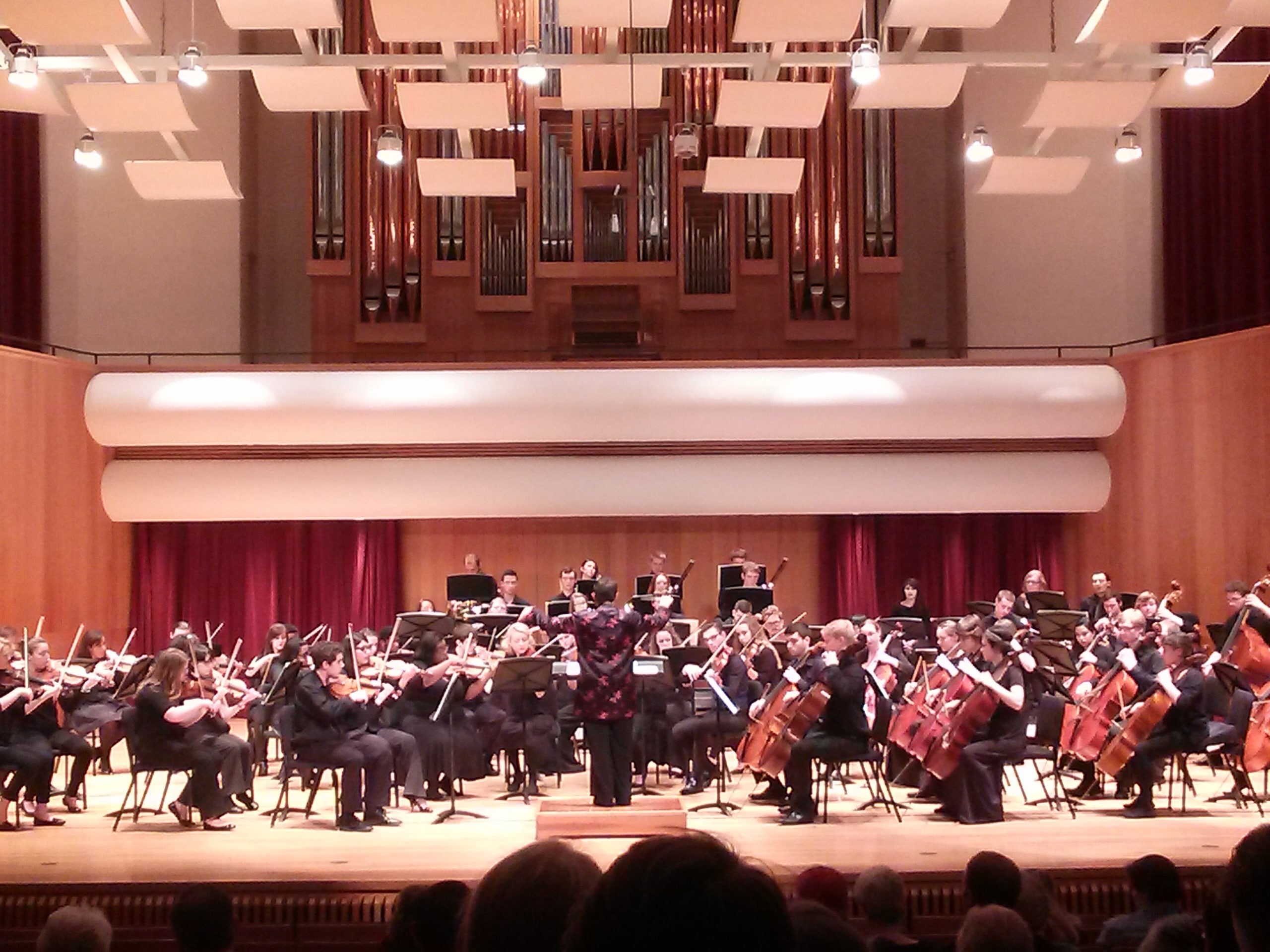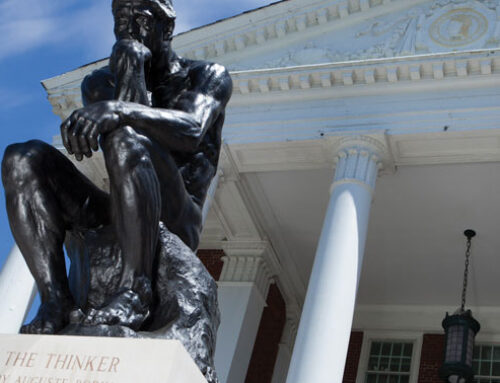By Madison Thompson–
The stage was set. The lights were dim. On the stage of Comstock Hall, the members of the University Symphony Orchestra practiced their own parts and collectively as a group. The room was filled with a throng of noise, but occasionally you could hear parts of the motifs bouncing around the room.
At 7:30 p.m., the hall fell silent. The first chair violinist walked out while the audience applauded. The University Symphony Orchestra members tuned their instruments to the first violinist’s specifications until he was satisfied. Then, conductor Kimcherie Lloyd walked out and members of the orchestra stood in respect. She explained that the first piece being performed, the Overture to “The Magic Flute” by Mozart, “sets the mood between good and evil.” With that, she retreated to her podium, raised her conducting baton and the show began.
The beginning of the performance started delicately, setting the mood. The first and second violins harmonized as the motif passed throughout all parts of the orchestra. Lloyd set the tempo by lightly bobbing her head along with her baton. Through a series of quick, dashing minor chords the picture of worry crept into the wind. After playing their final note, ending the piece, Lloyd beckons them to stand. They had earned the applause.
One week prior, I was able to preview this same piece by attending an open rehearsal. I noticed before that the group seemed like an individual cog or gear in a clock. Each piece worked perfectly in order to get the appropriate affect. Each person practiced for countless hours in order for the entire group to succeed. Now that the face of the clock has been reattached and I can see the final product, the difference was enormous. The final product, fantastic and spectacular, was something every member should be proud of.
For the next piece, the entire orchestra changed the seating. They pushed their chairs back, and in the commotion, brought out another conductors podium along with a piano bench. No doubt that this was for Jared Murray, featured concerto competition winner. The orchestra retuned and waited. Then come out Jared Murray carrying his faithful cello.
The amount of talent possessed on the stage represented countless hours of practice and devotion. If people could see the number of hours and the amount of money spent on private lessons and the value of the instruments, a new found respect would be given to those musicians.
Jared Murray was no exception. From memory, he performed the “Cello Concerto No. 1 in A Minor, Op. 33″ by Camille Saint-Saëns. In his face, anyone could see he truly connected with the notes and melody that he was playing. The rest of the orchestra became a large accompaniment for him. Murray’s hand traveled up and down the strings on his cello easily. His motion was fluid, perfectly calculated and executed. The audience was absolutely still, mesmerized by the melody. His vibrato added something to each pitch. The piece ended and the crowd erupted into thunderous applause.
After a brief intermission, everyone reconvened, retuned and awaited the conductor. Lloyd explained that the next piece “perhaps set the scenery,” and invited the audience to “sit back and close your eyes, but don’t fall asleep.”
This piece is not known well by name to the masses, but upon hearing it was when the mood changes from confusion to “oh, that song,” simply because it is often heard. It painted a picture of the awakening of cheerful feelings upon arrival in the countryside. If you closed your eyes, you could almost see the rolling hills of grass and happy country-side house. The motif was repeated throughout the piece. Lloyd also painted a picture by the way she conducted. By using the dynamics of her arms, the piece came to life.
The next movement was a “scene by the brook.” The notes were short and bubbling while each part emphasizes a kind of story line that was sweet and curious.
The next movement was a “merry gathering of country folk.” The piece emphasized a certain homey feel as well as how grand a country gather can be. Within the piece, it sounded like a joyous reunion among friends, family and neighbors. A smaller, more conversational segment allowed the same storyline to be heard again.
The movement after, “Thunder,” started without hesitation, sounding more realistic and believable than the thunderstorms we have here in Kentucky. The next movement was “Shepherd’s Song,” cheerful and thankful feelings after the storm, continued the story in giving thanks that, in the midst of a storm, the members of the county gathering were not harmed. This movement sounded like a glorious sunrise, bursting with color and vibrant tone, and ended the symphony.





